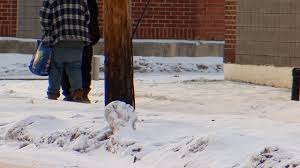In the freezing cold of winter, volunteers across central Pennsylvania are stepping out into the night, facing harsh temperatures to help count the number of homeless individuals in the area. The initiative, known as the “Point-in-Time Count,” aims to provide a snapshot of homelessness in the region and understand the scope of the issue.
What is the Point-in-Time Count?
The Point-in-Time Count is an annual event where volunteers go out into the community to count homeless individuals on a single night, usually in January. This count is critical for understanding the level of homelessness in the area, as well as gathering important data to support funding requests for shelters and services. Volunteers search various places where homeless individuals are known to stay, such as tents, cars, abandoned buildings, and other makeshift shelters.
The goal of the count is not only to gather numbers but also to gain insight into the needs of the homeless population. This helps local organizations better plan their services and ensure that the right resources are available for those in need.
Why Is This Count Important?
Homelessness is a widespread issue that affects many communities across the United States, and central Pennsylvania is no exception. The Point-in-Time Count gives local leaders, shelters, and organizations a clearer understanding of how many people are homeless at any given time and what kinds of support they require.
By identifying where homeless individuals are staying, it becomes easier to tailor resources and services to meet their needs. These include emergency shelters, food banks, addiction treatment programs, and mental health services. Additionally, the count helps in securing federal funding for homelessness prevention and assistance programs.
The cold winter nights make this task even more critical. For many homeless individuals, shelters are often full, leaving them to seek refuge in tents or cars. These conditions can be life-threatening, especially when temperatures drop below freezing, making it even more important for volunteers to conduct the count accurately.
The Volunteers’ Role
Volunteers are at the heart of the Point-in-Time Count. They are the ones who brave the cold, sometimes walking through snow and freezing winds, to make sure every homeless individual is counted. The volunteers are often trained to approach the situation with sensitivity and respect, ensuring that those experiencing homelessness feel safe and supported.
On the night of the count, volunteers are given specific areas to search. They visit known homeless hotspots, checking under bridges, in alleyways, and behind abandoned buildings, making sure to leave no area uncounted. Some volunteers are even assigned to count individuals living in their vehicles, while others search areas like local parks and parking lots.
In some cases, volunteers are accompanied by outreach teams who help connect homeless individuals with services, such as medical assistance, mental health support, or food and shelter. The volunteers work in teams to ensure safety and accuracy during the count.
The Challenges of Counting Homeless Individuals
While the count is necessary, it is not without its challenges. Homeless individuals may not always be easy to locate or willing to engage with volunteers. Many people experiencing homelessness prefer to remain unseen, especially during the winter when they are trying to find warmth and shelter. Additionally, some may not want to participate because they fear being judged or being placed in a shelter that they may not want to stay in.
The volunteers, however, are trained to respect the privacy and dignity of the people they encounter. They approach every person with kindness and offer resources, such as information on available shelters or food assistance, without pressure. It’s a delicate balance, but one that’s important for maintaining trust and ensuring the safety and well-being of everyone involved.
The Impact of the Count
The data collected during the Point-in-Time Count is invaluable in helping local organizations and governments address homelessness in central Pennsylvania. It allows for better resource allocation, informed policy-making, and a stronger community response to the needs of homeless individuals.
For many volunteers, participating in the count is an eye-opening experience. It highlights the severity of homelessness and the many challenges that people without stable housing face, especially in harsh weather conditions. Many volunteers return year after year, driven by a desire to make a difference in the lives of those who are less fortunate.
What Happens After the Count?
Once the count is completed, the data is processed and analyzed. The results help local organizations understand how many people are experiencing homelessness, what types of shelters are needed, and what additional services might be beneficial. This data can also influence local and state government policies on housing, healthcare, and poverty alleviation.
In the weeks following the count, volunteers often continue to stay involved, either by helping out at shelters, donating to local charities, or raising awareness about homelessness. The count is not just a one-night event, but part of an ongoing effort to address the root causes of homelessness and support those who are struggling.
Conclusion
The annual Point-in-Time Count is a critical event for central Pennsylvania, where volunteers brave the freezing cold to ensure that homeless individuals are counted and supported. Despite the challenges, these volunteers play an essential role in gathering data that can make a real difference in addressing homelessness and improving the lives of those in need. Their efforts serve as a reminder that, even in the coldest months of the year, compassion and community spirit can help warm the hearts of those who need it most.
Disclaimer – Our team has carefully fact-checked this article to make sure it’s accurate and free from any misinformation. We’re dedicated to keeping our content honest and reliable for our readers.








